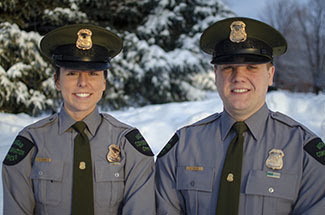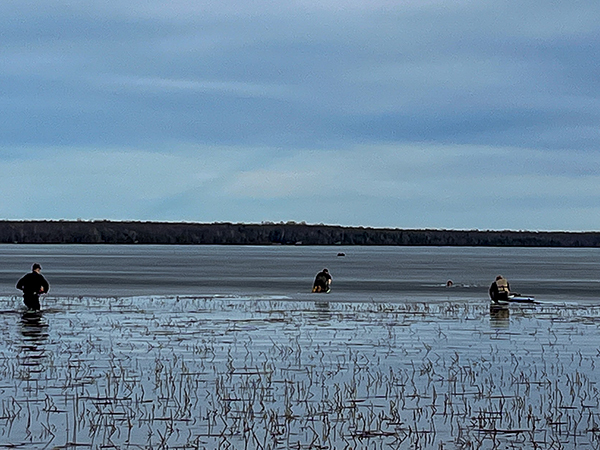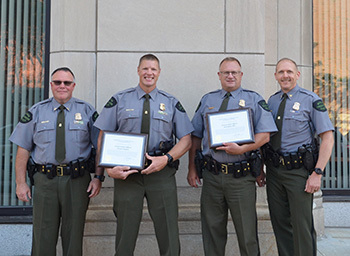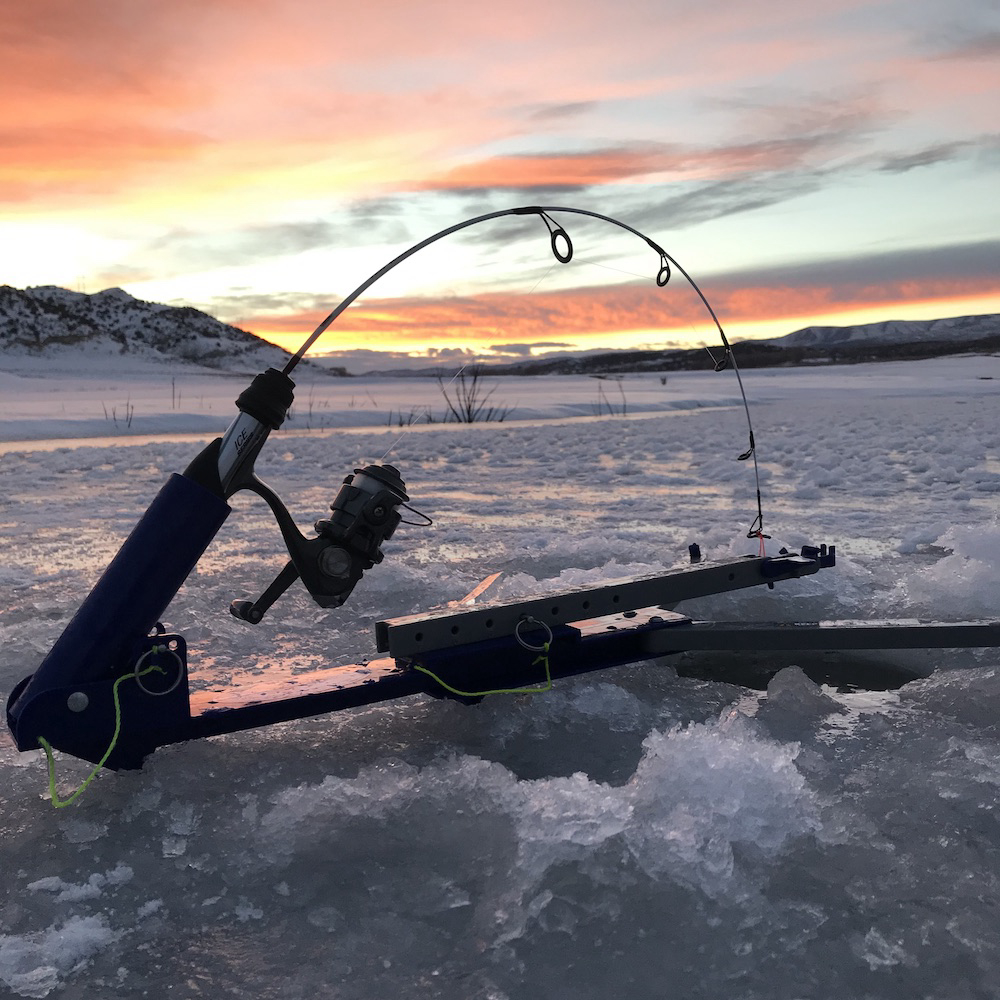Michigan DNR conservation officers rescue stranded snowmobilers

Four snowmobilers were rescued Saturday night from the ice of the Big Iron River by a pair of conservation officers who risked their own safety to find the riders and bring them back to waiting emergency crews.
The ordeal began at about 6:30 p.m. EST Saturday, when Negaunee Regional Dispatch broadcast a report of snowmobilers being separated from their larger group. They were now stranded on the river, south of White Pine.
Michigan Department of Natural Resources Conservation Officers Jenni Hanson and Zach Painter – who typically patrol Gogebic County – had been working earlier in the day near Bergland with U.S. Forest Service Law Enforcement Officer Josh Lopac.
The three officers were working to police careless snowmobiling Saturday in Ontonagon County.
“We work together a lot,” Painter said. “There’s a lot of land in this part of the Upper Peninsula that’s part of the Ottawa National Forest.”
That same day, Painter had responded to a personal injury accident, involving a snowmobiler who struck a tree and had to be airlifted to a Wisconsin hospital. Hanson had been assisting with a women’s snowmobile clinic in Bergland. She was on her way home when the call came in.
One of the members from an original group of seven or eight snowmobilers made his way back 10 or 15 miles to the Konteka Black Bear Resort in White Pine.
From there, police were alerted that four riders had not kept up with the group. They were now stranded where their sleds became stuck in slush in the middle of the river.
Painter said the snowmobilers had ridden up the river, which is illegal under federal regulations, to do some backcountry off-trail riding. Hanson, Painter and Lopac, along with an Ontonagon County Sheriff’s deputy, were the first law enforcement officers arriving on the scene.
The deputy set up an incident command post at the resort. He instructed Hanson and Painter to travel 3 or 4 miles up Federal Forest Road 360 to a bridge where they could access the river. This was the only place to reach the riders from the south.
Meanwhile, Lopac, a volunteer and a couple of Michigan State Police troopers worked their way off the North Country Trail to try to reach the riders from the north.
DNR Parks and Recreation Division staffers provided assistance and equipment to the effort.
The two conservation officers parked their snowmobiles at the river and began their trek upstream to find the snowmobilers.
“You needed snowshoes to get back there,” Hanson said. “At times it was treacherous.”
The officers had to decide between the lesser of three poor options in making their way up the river, which was 15 to 20 feet across at its widest point.
They could walk up the tracks of the sleds, which might be concealing weakened ice. The banks of the river were high and steep, and the edges of the river held deep, soft snow.
“We decided to walk up the tracks of the sleds because that was the path of least resistance,” Hanson said. “It was the easiest walking.”
Still, there were obstacles to negotiate, including places in the ice where their boots would break through into the slush or shallow water below.
Where the water was open, the officers had to get out of the river and walk around the hazard before returning to the snowmobile track up the river.
“In the powder it was 3 or 4 feet deep there in some areas,” Hanson said. “Even in snowshoes, you would sink if you stepped there.”
Painter said the conservation officers tried to stay on safe ice near the shore whenever possible.
About the time the rider had reached the resort to report the incident, the remaining four snowmobilers had decided to abandon their sleds and start walking downstream.
Hanson and Painter eventually met the four riders walking. The officers had brought warm hats, gloves, water and granola bars to aid the sledders. Hanson checked their conditions.
One of the four men was presenting symptoms of hypothermia, including exhaustion, low energy and loss of fine motor skills – he was unable to tear open the food package.
“Their clothes were wet and frozen on them,” Hanson said. “There were ice balls hanging off their clothes.”
The officers guessed all the men ranged in age from 25 to 35.
Another of them began to show signs of hypothermia on the hike back.
“He seemed fine, but as we continued walking, he started to stumble and began to lose awareness,” Hanson said. “They claimed they had been walking for three hours before we met them.”
It was 3 miles to the bridge from where the conservation officers had met up with the men. From there, it took them just under two hours to make the walk back.
“They were like zombies walking out of the woods; they would take a step and then fall over,” Hanson said. “They were so exhausted.”
Back at the bridge, the men were loaded into heated side-by-side off-road vehicles with tracked wheels. From there, the men were taken the roughly 3 miles back to M-64, where ambulances, police and fire officers waited.
It was about midnight when the search party returned safely with the sledders. Beyond mild hypothermia, the riders had no injuries.
“By walking, they pretty much saved their lives,” Hanson said. “They kept warm by walking.”
All four of the riders were from Minnesota, and a couple of them had been to the area riding before.
“They said they had only a couple of years of riding snowmobiles,” Painter said. “They admitted they were in terrain too rough for their riding experience.”
Lopac issued a ticket to the group for riding in an area closed by the Forest Service to sledding – the river ice. The area the men were snowmobiling in is located southeast of Nonesuch Falls and Porcupine Mountains Wilderness State Park.
Hanson said it was a very exhausting effort getting out to where the riders were located.
“As soon as we found them, it was very rewarding,” she said. “I’m glad we were there.”
Michigan conservation officers are fully commissioned state peace officers who provide natural resources protection, ensure recreational safety and protect citizens by providing general law enforcement duties and lifesaving operations in the communities they serve.
Learn more about Michigan conservation officers at Michigan.gov/ConservationOfficers.






